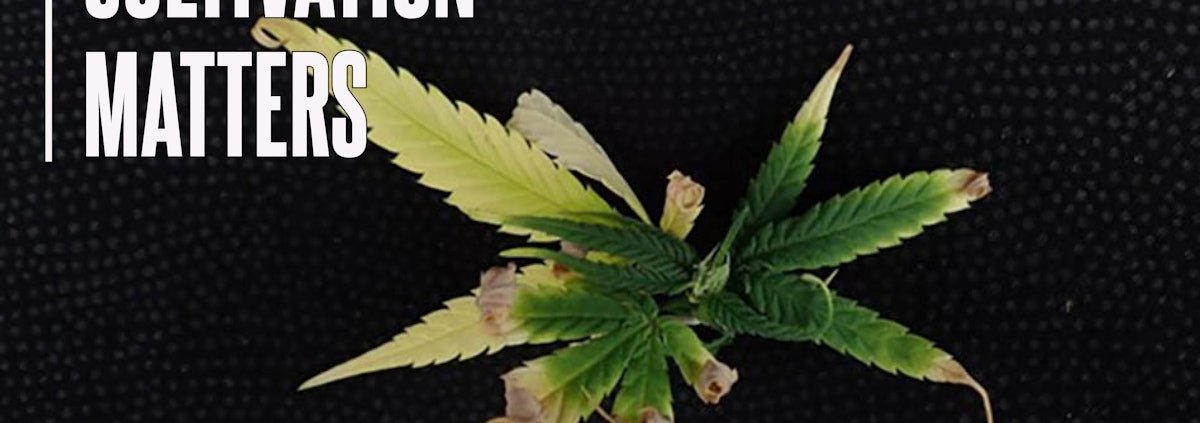Feel the (Cannabis Leaf Margin) Burn | How to buy Skittles Moonrock online
Learn how to order marijuana online. TOP QUALITY GRADE A++
Cannabyss Inc. is the best place online to buy top quality weed, cannabis, vape, marijuana and CBD products. Get your borderless orders delivered at the pickup spot with ease. Top Grade products for client satisfaction.
👉 Click here to Visit our shop! 🛒
It can often be difficult to diagnose cannabis cultivation problems. Just as in humans, a variety of disorders can exhibit similar visual symptoms.
For example, leaf tip burn (also referred to as marginal necrosis) can occur due to a wide range of causes. Here, we explore some of those causes to help cannabis growers diagnose their plant health problems.
There are various ways to confirm high EC problems, including in-house by collecting a solution sample using the PourThru method to evaluate substrate pH and EC using an EC meter. The higher the salt concentration, the greater the electrical reading. Testing substrate EC allows you to understand the total salt concentration of the substrate; however, it does not provide a reading of individual nutrients.
“Optimizing Electrical Conductivity (EC) in Cannabis Cultivation”.
Water Stress
Drought stress is another common cause for leaf margin burn in plants. Similar to high salt accumulation, lower foliage will exhibit more severe visual symptoms compared to upper foliage. Marginal burn will generally be observed following the rehydration of plant tissue and may not be noticed until after the rest of the plant appears healthy.
 Figure 2. Symptoms of drought stress appear as marginal burn on lower leaves following rehydration. Damage is typically more severe on older foliage.
Figure 2. Symptoms of drought stress appear as marginal burn on lower leaves following rehydration. Damage is typically more severe on older foliage.
While there are no easy direct measurements of drought stress occurrence, for most growers, monitoring substrate moisture levels and supplying enough water to promote plant growth without oversaturating the root zone is important. To avoid drought-induced stress, maintain consistent irrigation practices that match the plant’s growth stage and environmental conditions, ensuring even moisture distribution throughout the root zone.
For more on water, see our January 2023 Cultivation Matters column “What’s in Your Water?”
Nutrient Deficiencies
Nutrient deficiencies can also result in leaf margin burning. For example, when potassium (K) is limited, foliar deficiency symptoms will first manifest as a general yellowing of the leaflet margins in lower branches (Fig. 3). If K continues to be limited, this yellowing will continue, resulting in necrotic margins that appear burnt (Fig. 4).
 Figure 3. Initial potassium deficiency symptoms exhibit yellowing (chlorosis) along the leaflet margins of lower leaves in cannabis.
Figure 3. Initial potassium deficiency symptoms exhibit yellowing (chlorosis) along the leaflet margins of lower leaves in cannabis.
 Figure 4. Advanced potassium deficiency symptoms with necrotic (burned) margins following initial yellowing, primarily affecting lower foliage.
Figure 4. Advanced potassium deficiency symptoms with necrotic (burned) margins following initial yellowing, primarily affecting lower foliage.
K deficiency will generally exhibit a slower progression from initial symptoms to leaf margin burn compared to drought stress or high EC, which will exhibit the burn/necrosis faster.
Calcium (Ca) deficiency will also result in marginal burn; however, Ca is an immobile element, and symptoms will first appear in the upper foliage, whereas the symptoms first appear in the lower foliage in K deficiencies. Ca is utilized in cell wall structure, and as a result, when deficient cells are not able to fully expand, it can result in marginal leaf burn and leaf distortion (Fig. 5).
 Figure 5. Calcium deficiency symptoms on upper foliage include marginal burn and distorted leaf growth due to impaired cell wall development.
Figure 5. Calcium deficiency symptoms on upper foliage include marginal burn and distorted leaf growth due to impaired cell wall development.
Ca deficiency can be caused by a lack of transpiration, nutrient imbalance, incomplete fertilizer, or more. Ca is transported via mass flow and requires plant transpiration to be taken up through the xylem. There are a variety of factors that can negatively influence transpiration rate and, as a result, negatively impact Ca uptake, such as low vapor pressure deficit, low airflow, or high temperature.
Additionally, providing the proper balance of K, Ca, and magnesium (Mg) is important for the production of cannabis. Providing too much of one element does not in itself result in toxicity symptoms. Instead, excessive levels of one element can have an antagonistic relationship with the others. For instance, excessive K will result in either a Ca deficiency or an Mg deficiency. In general, a 4:2:1 K-Ca-Mg ratio is recommended to prevent nutrient antagonisms for greenhouse crops.
Conclusion
While symptoms may appear visually similar, careful diagnosis using tools like EC meters and the close monitoring of water, fertility, and environmental conditions is essential for identifying the root cause. Understanding how each factor, such as salts, water availability, and nutrient ratios, impacts plant physiology can help prevent large-scale damage.



Leave a Reply
Want to join the discussion?Feel free to contribute!